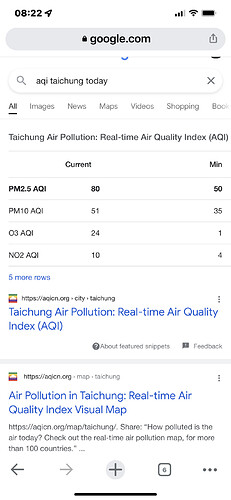Today I awoke to an acrid odour pervading in the area where I live. The odour is characteristic of coal burning (smells like tar). My eyes are dry and uncomfortable; nose is blocked and runny.
I also notice that there is much reduced noise from the local bird population: they are not so happy today, maybe the flew elsewhere.
I check the website:
Sure enough it indicates that air pollution is unacceptably high. I have started up our air purifier It indicates PM Levels around 45 confirming what the public website says.
My own Smart Citizen Station shows correlation between Pm levels and TVOC with a big spike in PM early this morning. It’s such a pity that the platform does not recognise nor calculate Noxious gas readings for the 6 gas sensors that I have @oscgonfer @pral2a1 !!! So I cannot check the high Ozone and No2 and SO2 readings reported on the public website. Surely SO2 in particular would pinpoint coal burning as the big issue that it may be. And wind direction would point to Taichung Port too (location of worlds largest coal power station).
Those extra sensors in my SCS would certainly help to paint a more useful picture of the pollution than merely the standard SCK sensors can show.
These are conditions where the Smart Citizen Station comes into its own. The citizen owning one can identify the pollution levels where they live and (if they have the anemometer installed) point to the source too.
It’s not a pleasant day today. The only choice available to me is drive up into the nearby mountains; maybe the trees will filter the air somewhat and make it more pleasant. I will propose such a jaunt when my partner wakes up.
However it’s has given me an idea:
What if there was a smart citizen device that’s light enough and small enough to be attached to a drone aircraft and lofted high into the air. It could be set up to take samples at specific altitudes by opening a sampling portal in its enclosure. It can take photos too.
This could add another dimension for air quality observations.
Of course there are issues: like the illegality of flying drones near certain locations: airports, defence installations, populated areas. Physical inability of drones to reach high altitudes might be an issue too. It would need real time gps, and it must run on battery.
Anyway it’s food for thought.


